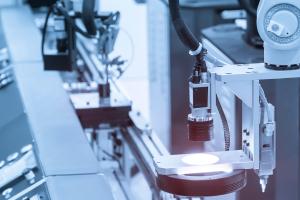Geiger-Müller tubes are the most fundamental high-gain gas filled radiation detector components and offer the instrument designer unparalleled access to a versatile and well understood signal in the form of one amplified pulse per radiation event.
Learn more about Geiger-Müller tubes
Need some answers? Ask our experts!
Contact usBare Geiger-Müller tubes
Energy compensated Geiger-Müller tubes

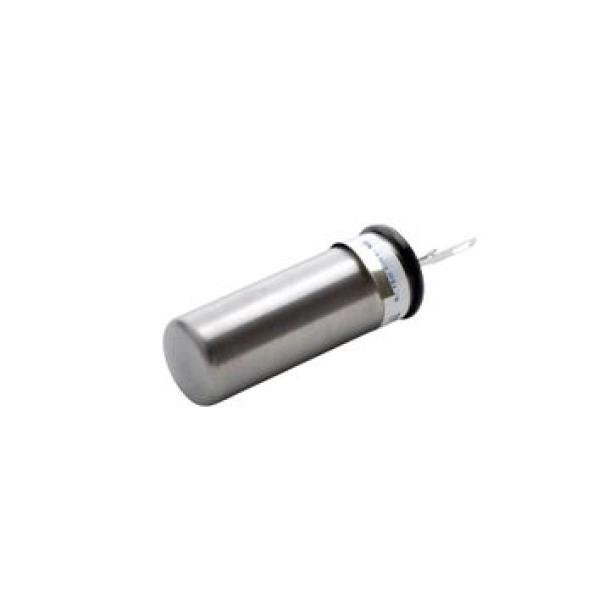

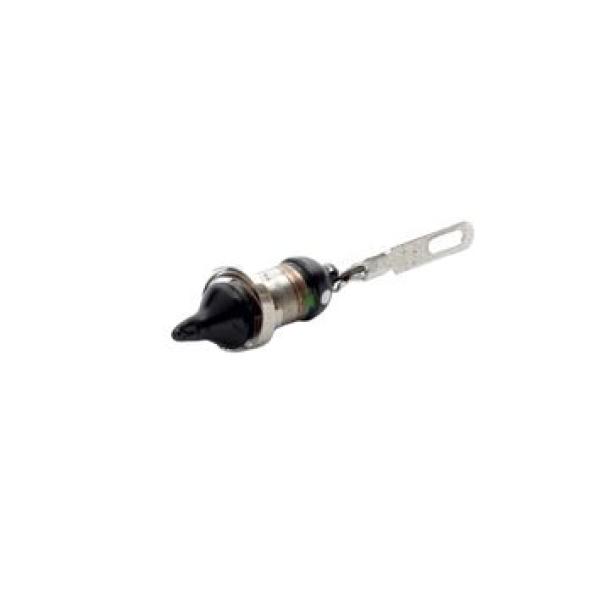



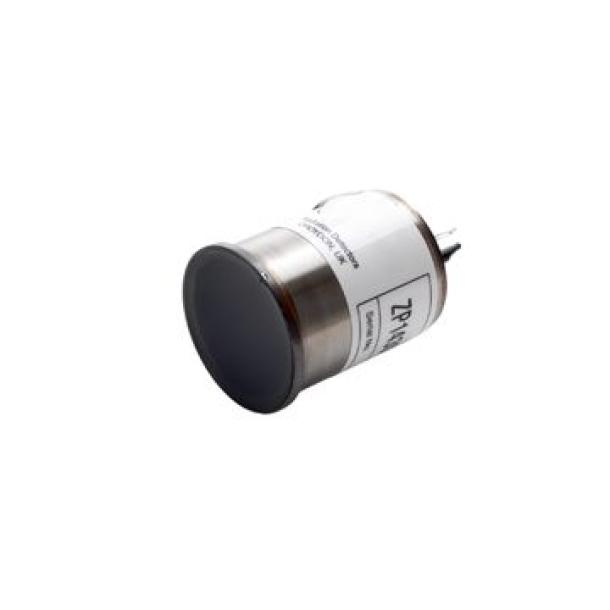
Energy compensated Geiger-Müller tubes
Measure radiation dose based on an ambient or effective profile
Read more


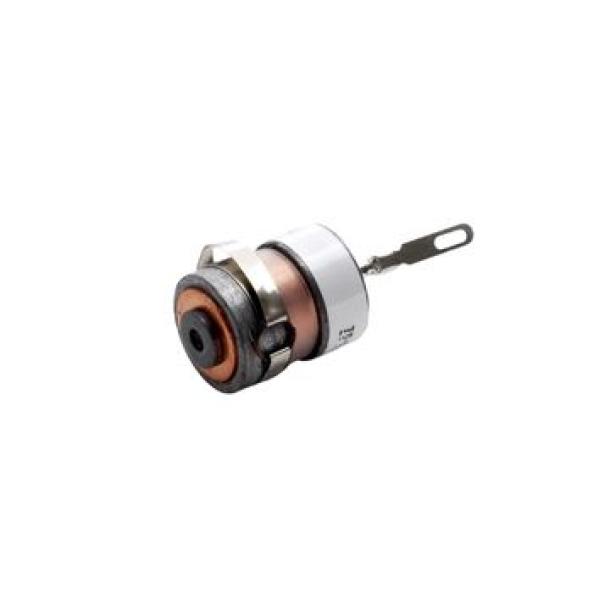

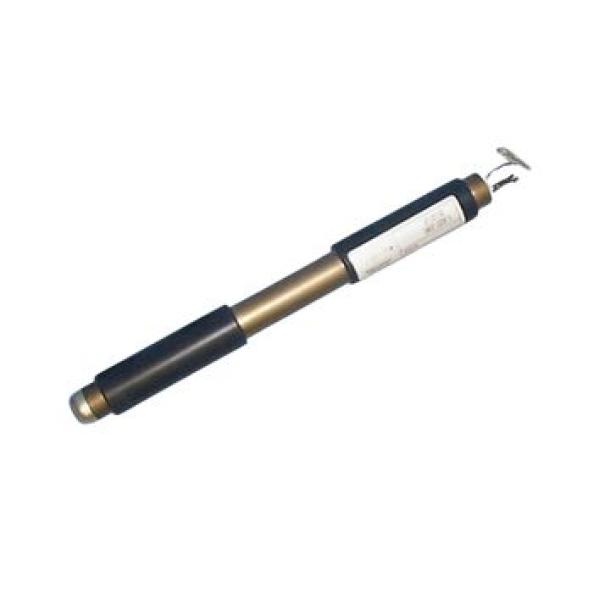
Learn more about Geiger-Müller tubes
Standard bare tubes overview
Standard bare tubes are widely used to detect or quantify the presence of radiation (flux measurement) typically in industrial, safety and security applications including density profiling or contamination monitoring while energy compensated tubes combine the bare tube with a filter to measure the effect of a radiation dose rate in the human body.
Engineers value the robustness and simplicity of the Geiger-Müller tube format coupled with a price-performance combination which is unmatched by other technologies.
Purchasing managers appreciate the proven manufacturing processes which deliver modern Geiger-Müller tubes supported by Exosens’s expertise in achieving enduring availability and continuity of supply as a highly focussed detector manufacturer.
Exosens Geiger-Müller tubes are offered as four product platforms and three levels of integration:
Levels of integration
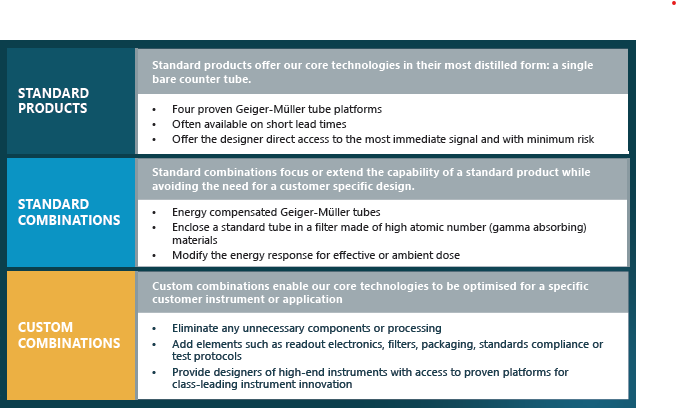
Standard product platforms
Our four Geiger-Müller tube platforms are each optimised with different sensitivities, entrance windows and sensitive areas for specific purposes. They are often used in combinations in order to equip an instrument with the widest possible sensitivity range and the confidence of fail-safe operation by including a high-dose rate detection capability.
> General Purpose alpha, beta and gamma
• Our baseline gas volume and mixtures
> High dose gamma
• Smaller volume for lower sensitivity to prevent overload in high flux
> Low dose gamma
• Larger volume for higher sensitivity in low radiation environments
> Contamination monitor alpha, beat and gamma
• Large area and thin entrance window for efficient collection of alpha and beta particles
Where appropriate each bare tube can also be combined with an energy compensating filter making it suitable for dosimetry measurements.
Energy compensated (standard combinations)
The sensitivity of a bare Geiger-Müller tube is strongly related to the energy of the gamma radiation. Energy compensation using high atomic number materials can modify this: the principle of a flatter response from a compensated device is illustrated below.
Energy compensation filters are optimised for either ambient or equivalent dose measurements
Operating principles
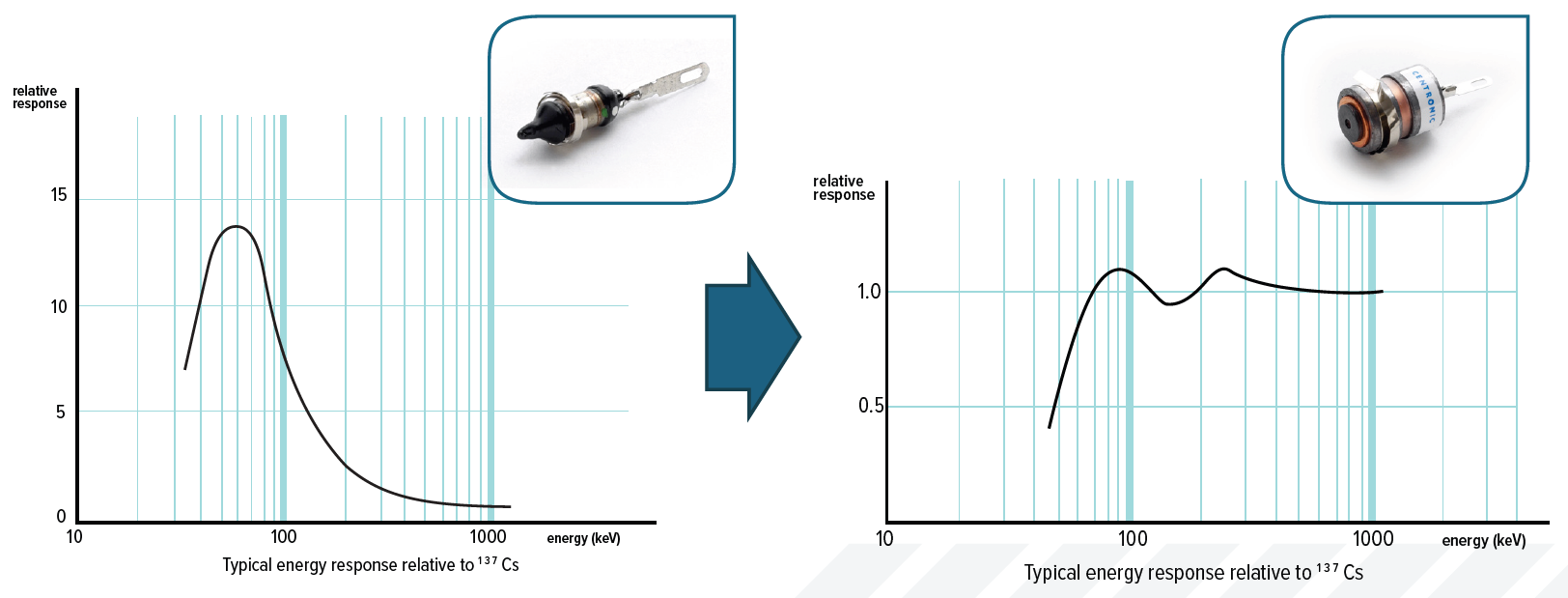
Many instrument designers are experienced in selecting and deploying Geiger-Müller tubes however we recognise that for some engineers this technology may be less familiar. In both cases we strongly encourage users to engage with us at the earliest opportunity in their design process.
In a Geiger-Müller tube the sensor consists of a carefully formulated gas mixture contained inside a hermetic tube with a metal wall which serves as both the cathode and, for gamma rays, the absorption medium as illustrated.
- An ionising voltage is applied between the anode and cathode of the Geiger-Müller tube
- Gamma radiation absorbed in the metal cathode wall causes electrons to be ejected into the detector volume
- Alpha, Beta or Gamma radiation enters the detector volume through a thin window (present on some devices)
- The charge injected by the radiation event causes the detector gas to ionise (briefly separate into a conductive plasma) and the high voltage causes avalanche multiplication when ions are accelerated in the electric field and collide with other gas molecules causing further ionisation
- The conductive gas briefly enables a current to flow between the anode and cathode
- The quench gas in the filling mixture takes effect and prevents further avalanche multiplication, thereby causing the detector to reset and the pulse to end, ready for the next detection event
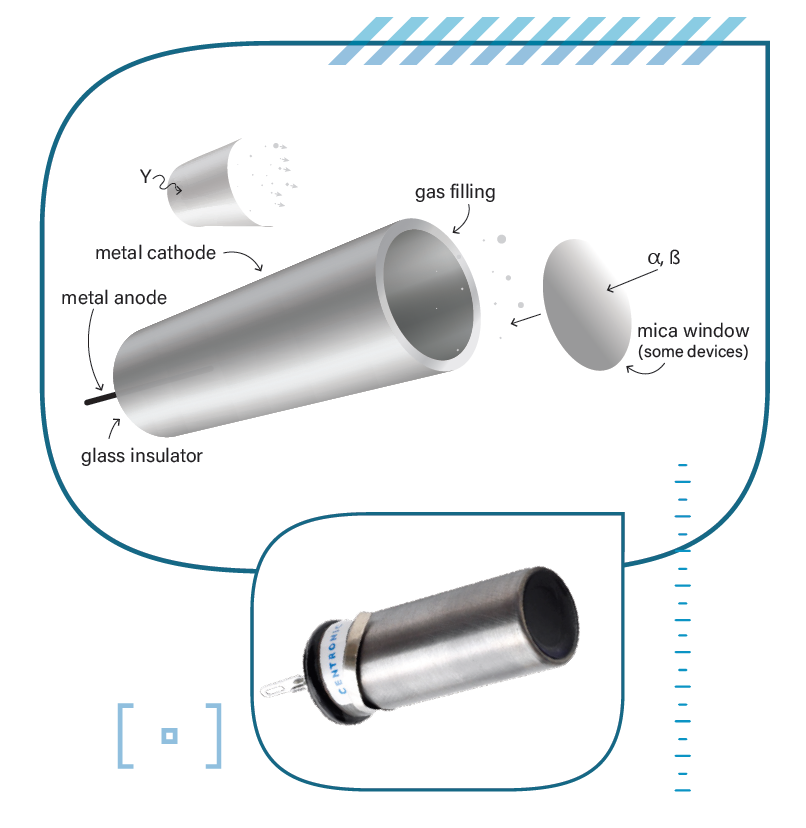
Technologies
See all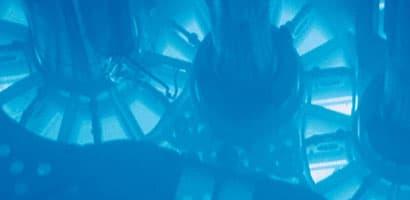
Gamma and Neutron technology
Gamma and Neutron detection technology is a cutting-edge field that significantly contributes to nuclear safety and research.
What's new in Geiger-Müller Tubes?
See all
Paris.
FROM Nov 04th 2025 TO Nov 06th 2025
WNE 2025
Join Exosens at the World Nuclear Exhibition (WNE) 2025, the leading global event for the civil nuclear industry, taking place at Parc des Expositions Villepinte in Paris, France.
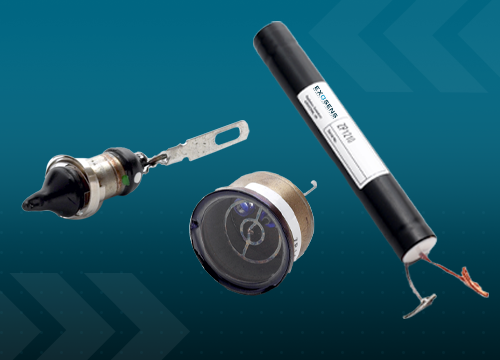
Jul 10th 2025
Spotlight on Geiger-Müller excellence
Exosens: Fundamental Detector Technologies Powering Trusted Radiation Detection

Madison, Wisconsin.
FROM Jul 13th 2025 TO Jul 17th 2025
Health Physics Society’s 2025
Visit Exosens at the Health Physics Society’s 70th Annual Meeting, Monona Terrace Convention Center, Madison, Wisconsin


